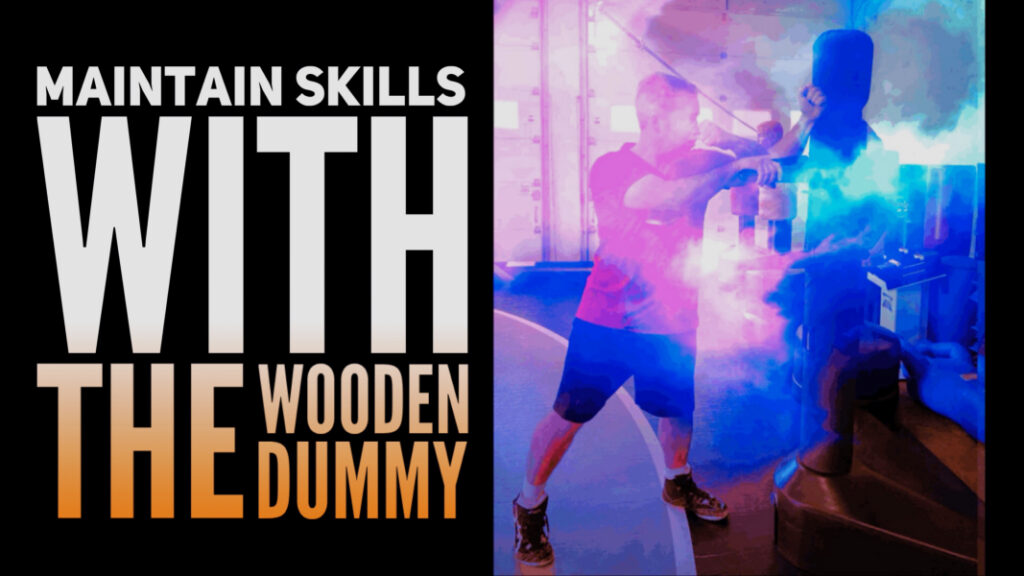
COST:
90 mins @ $200/per person. Limit of 4 participants.
For children 15 years-old and below, parents must stay on-site during the entire lesson
Note: All courses at UMA are Vaccination Mandatory (including all current boosters)
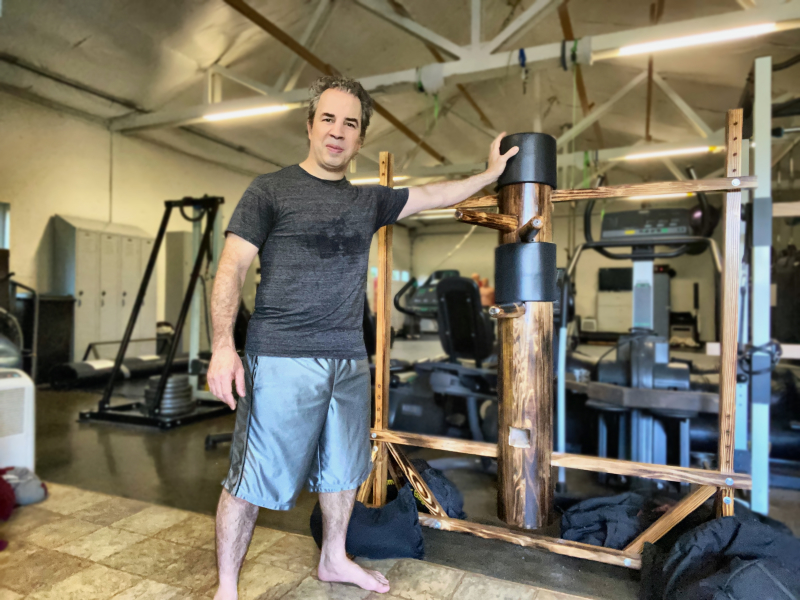
A skill is perishable. It takes 5 basic steps to maintain a skill so that is executable at will with a high success rate. This is accomplished by not letting rust build-up from inactivity and thereby keeping the skill active and alive. What are these steps?
First you need to learn the skill, then you need to practice it. Eventually you become proficient at the skill. Before you get to the last step of maintaining it, think about what step is necessary to bridge the gap between proficiency and routine maintenance. The answer should be that you need to “fuctionalize” the training -in other words, make it purposeful to you.
- Learn
- Practice
- Befome Proficient
- Functionalize
- Maintain
One tool that certainly helps functionalize your training and therefore helps maintain it is a Wooden Dummy. You can learn to maintain a slue of skills by studying the UMA wooden dummy form. After I’d created the UMA wooden dummy form (kata) I was going to publish it as an instructional DVD boxset. I abandoned that idea because I would rather work directly with students so they can learn the many layered techniques within the form.
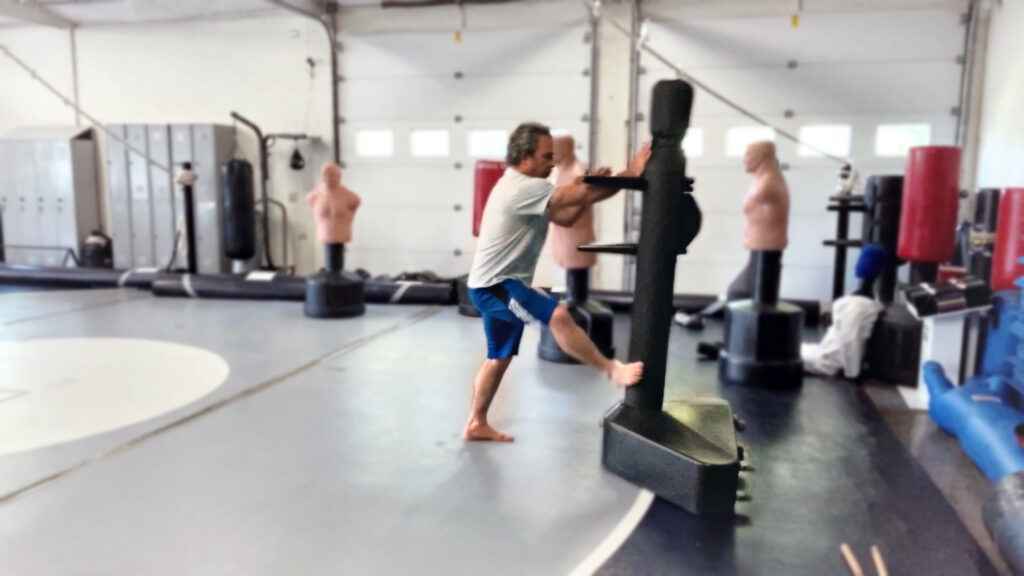
The Mook Jong, also known as the Wing Chun Dummy or simply the Wooden Dummy, is an athletic piece of training equipment used in Chinese martial arts and made from wood. Its design is not literal but is representational to various points and positions of an opponent’s body. Bruce Lee, originally a student of Wing Chun kung fu, modified the wooden dummy for his martial art practice and philosophy that he labeled Jeet Kune Do. Nowadays some dummies are made from synthetic materials such as steel or plastic.
There is lots of discussion concerning “How you should use the wooden dummy,” “When you should use the wooden dummy,” etc. There are ways of going fast and hard, which looks good, and then there are ways of going slow and precise. Some demonstrations I’ve witnessed using the wooden dummy look completely cheesy to me while others look impressively cool. The UMA Wooden Dummy form is directly designed to help train mixed martial arts and street self-defense techniques and movements.
Be aware the wooden dummy is not the end-all, be-all tool for all-purpose training. The set UMA form is designed with the aid of the wooden dummy so that practitioners of the UMA curriculum can train repetitiously without forgetfulness or complacency. It is immeasurably helpful to have a set form such as this and is essentially a kata against a tangible object; something a student can rely on that is the same pattern every time and a form they can aspire to replicate with intent, purpose and meaning.
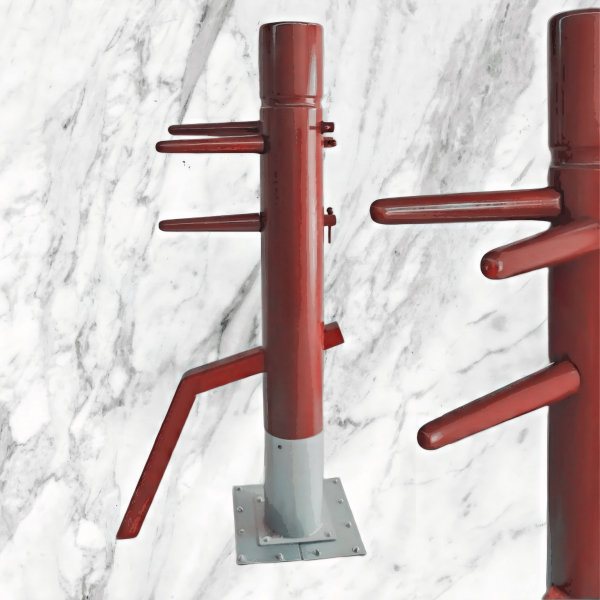
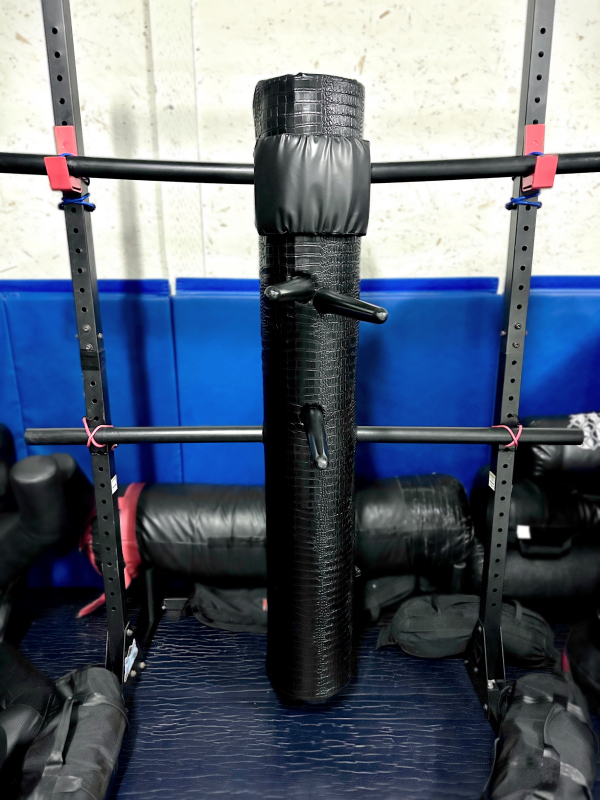
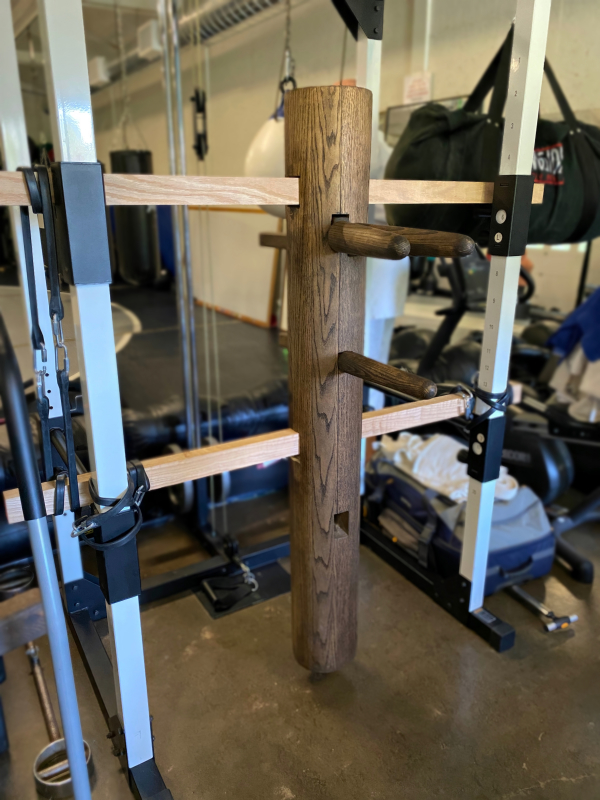
My introduction to the wooden dummy was from Joseph Simonet and Addy Hernandez in the early 2000’s and was supplemented through my studies from Sifu Paul Vunak.
Wooden dummy training has been instrumental in my personal practice.
Now, for the 1st time, UMA instructor Rob Eis is teaching his UMA curriculum form.
The UMA form has 10 stages with over 150 movements covering many essential areas within the UMA curriculum. They are:
- Preemptive striking
- Sports training to street self-defense
- Boxing
- Wrestling
- Muay Thai
- Lowline Kicking & kick defense
- JKD concepts
- Clinch entries
- Block & counter training within ranges
- Submissions
I have three stationary dummies on a rack, five that are weighed down, and three more that are mobile and can be repositioned for training. The dummies on the rack have more spring due to the slat placements and the free-standing models do not have as much give.